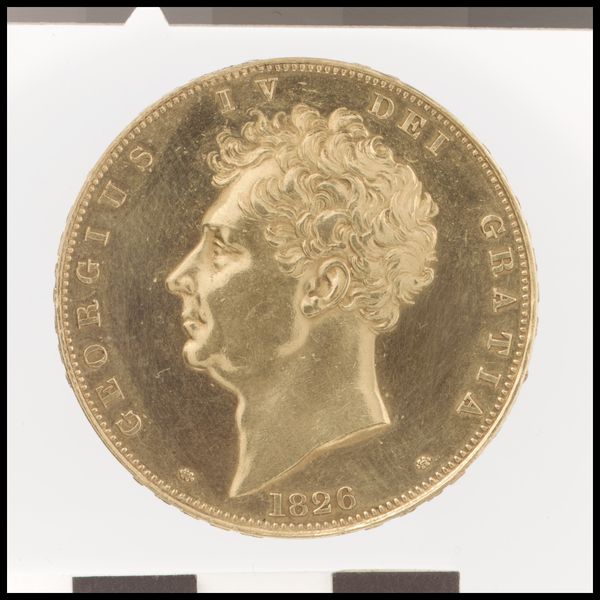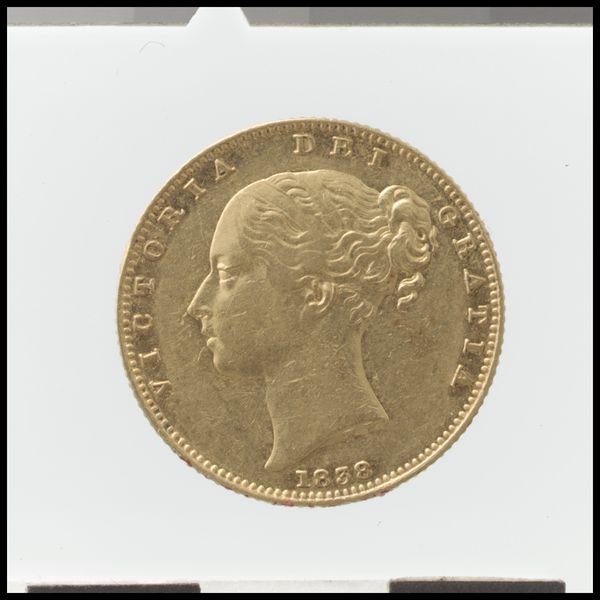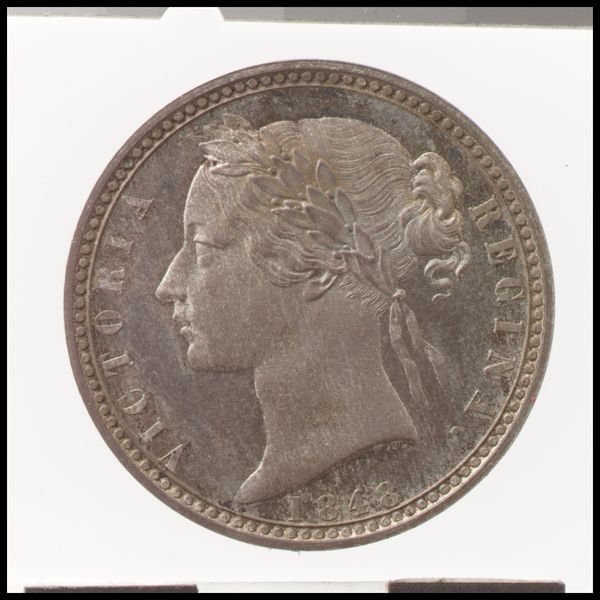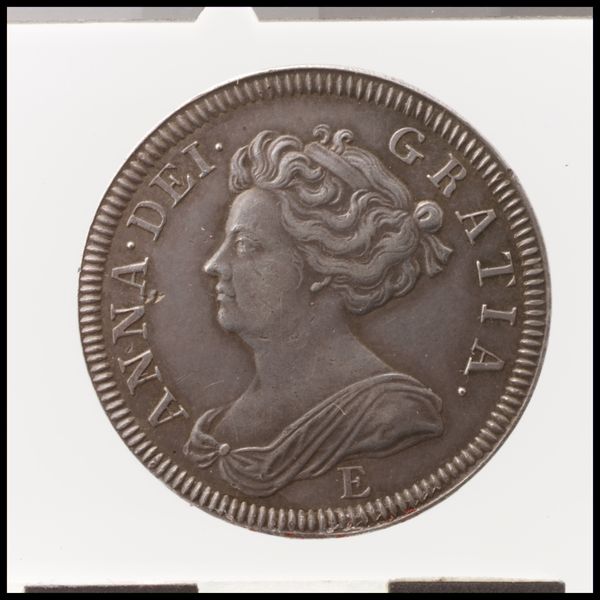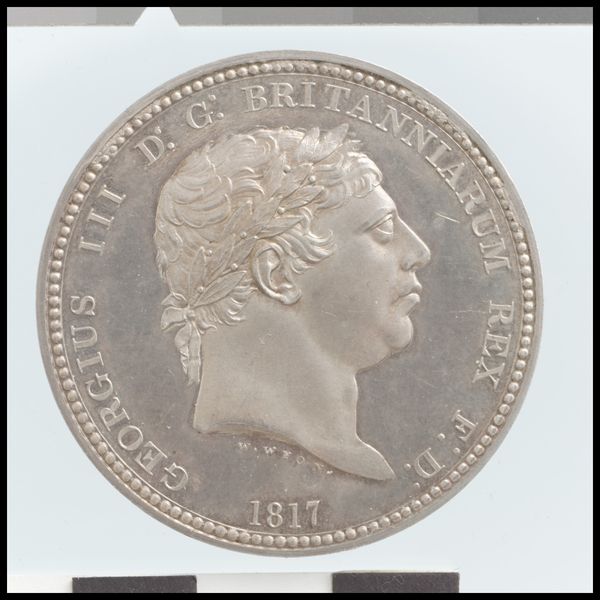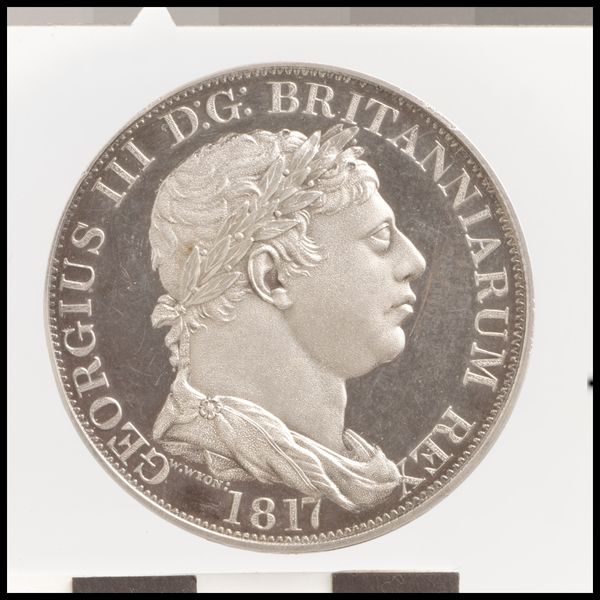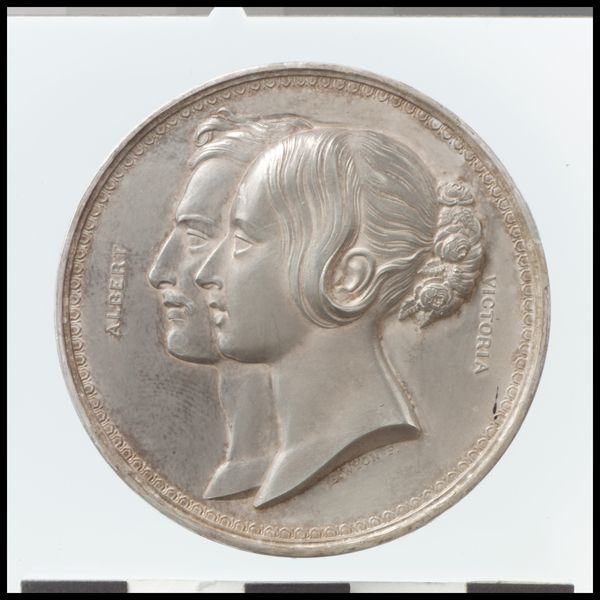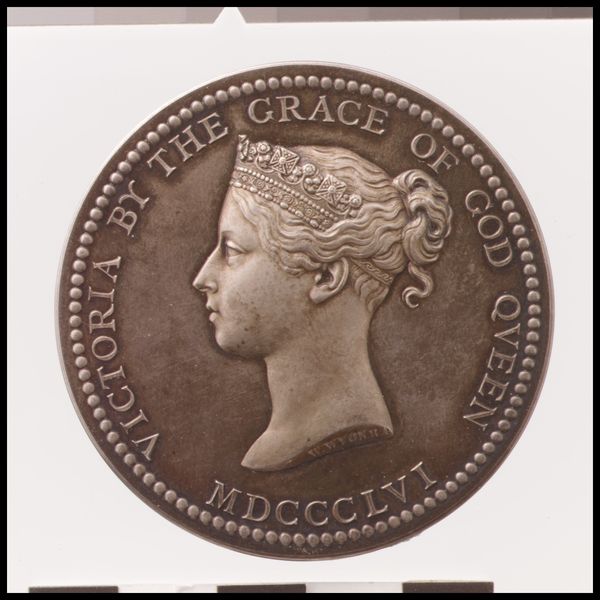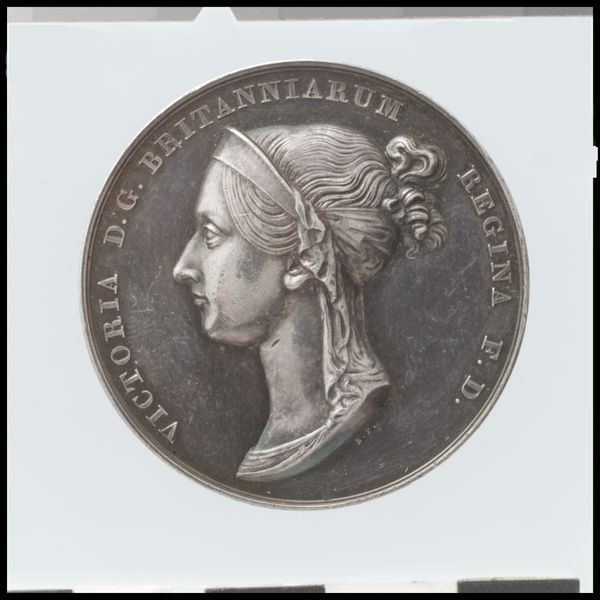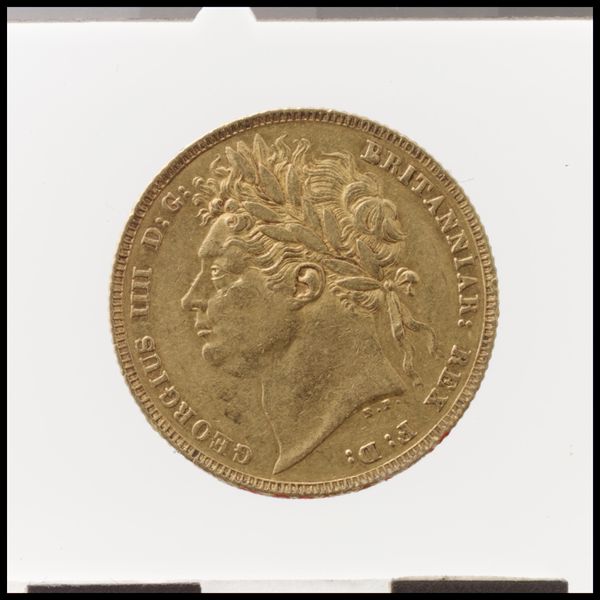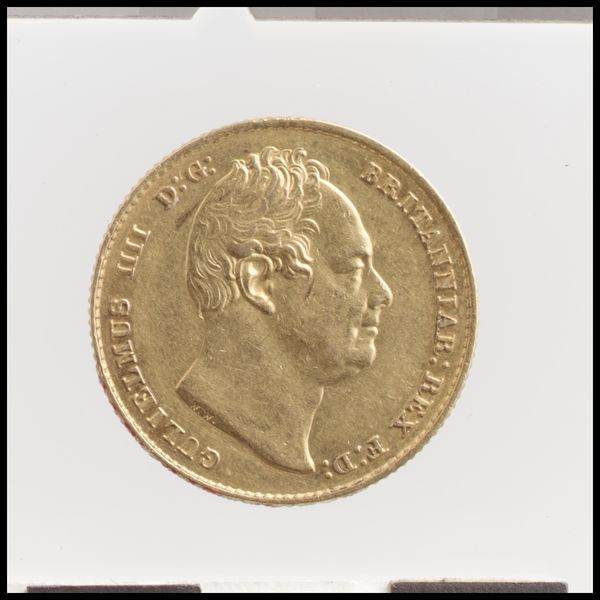
metal, sculpture, engraving
#
portrait
#
neoclacissism
#
metal
#
sculpture
#
sculpture
#
decorative-art
#
coin
#
engraving
Dimensions: Diameter: 40 mm.
Copyright: Public Domain
Editor: So, here we have an engraved crown from 1819, by Benedetto Pistrucci, depicting George III. It's incredibly detailed, even on such a small metal surface. There’s something about coin portraits that always feels both official and strangely intimate. What symbolic layers do you see at play in this particular depiction? Curator: It's interesting that you use the word "intimate." That word is far from what I might use. While seemingly straightforward, numismatic portraiture often serves as a potent instrument for crafting and disseminating cultural memory. Consider the laurel wreath: a classical symbol of victory and status, directly referencing a lineage of emperors and heroic figures. Does that symbolism carry a coherent meaning across different populations, and what is lost in translation? Editor: So it’s less about personal intimacy, and more about linking George III to a grand historical narrative. Are there any subversive elements at play or does the wreath serve to convey status? Curator: Exactly. Look at how Pistrucci, though a Neoclassical artist, doesn’t completely idealize the King. There's a visible tension between representing the King’s power and conveying the man himself, suggesting both authority and perhaps, a hint of vulnerability. Might this tension reveal changing perceptions of monarchy at the time, and perhaps anxieties regarding its future? Or am I reading too deeply into the nuances? Editor: That's a perspective I hadn’t considered, this notion of a vulnerability. The laurel wreath made me think of Roman emperors. Thanks for connecting the symbolism of power to what might be interpreted as a sign of worry on his face! Curator: Symbolism isn't static. Our interpretation shifts depending on the cultural and psychological context, highlighting that artworks don't simply reflect history but participate in its ongoing construction. That's where the real richness lies.
Comments
No comments
Be the first to comment and join the conversation on the ultimate creative platform.
